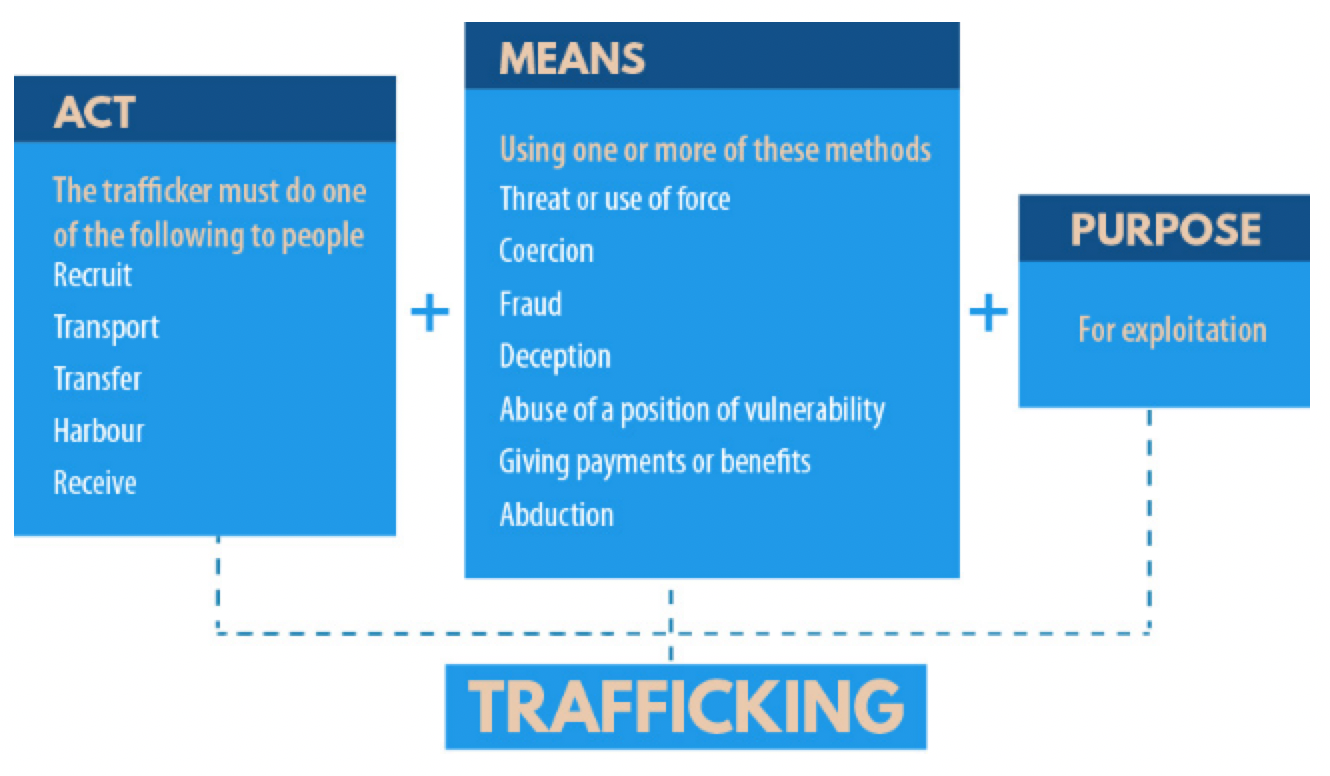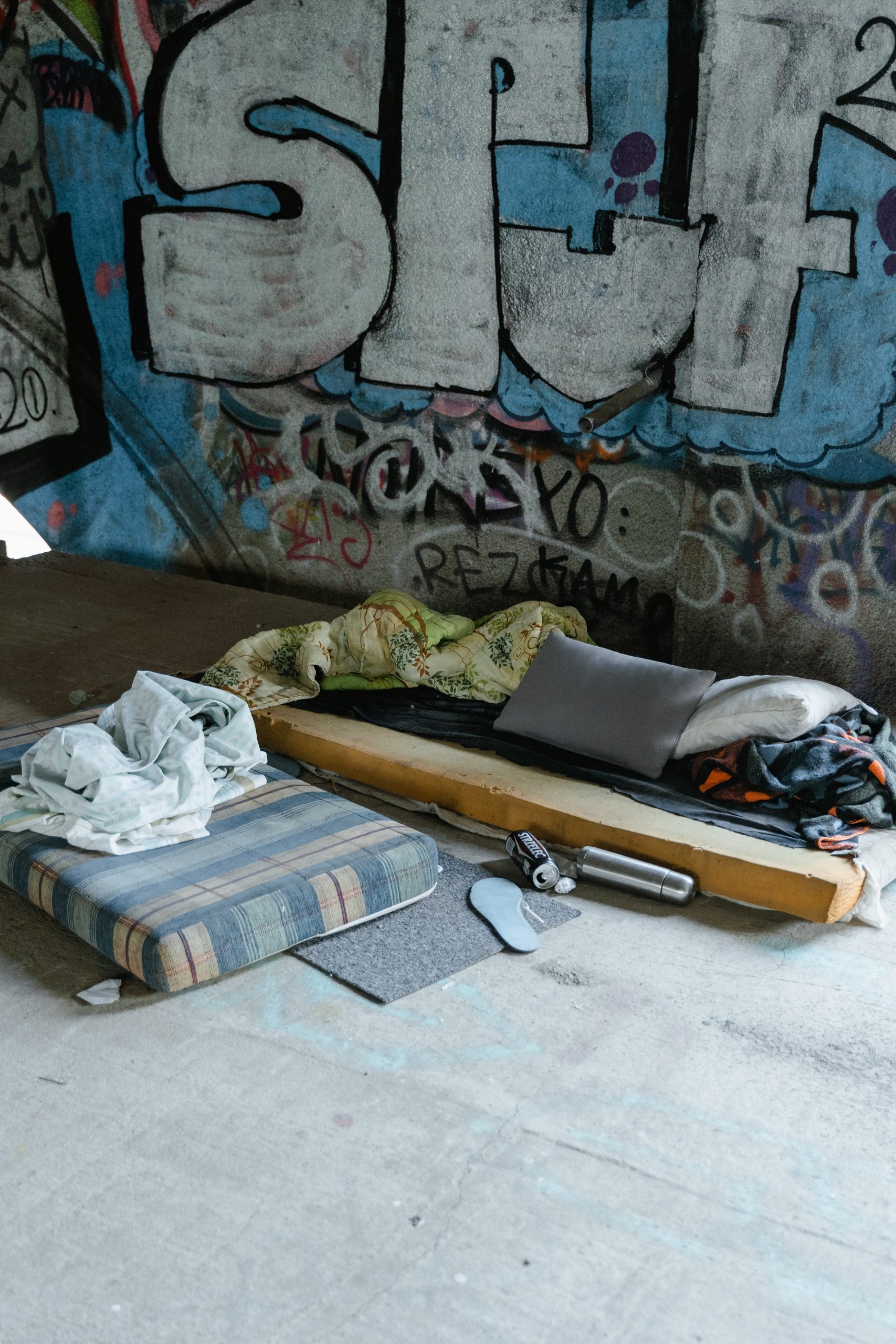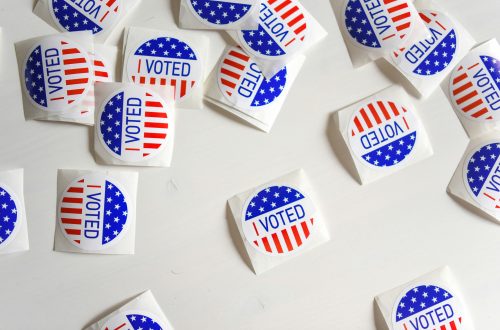
Human Trafficking in Ohio: A Global Crisis
by Summer Pawlowski
Growing up in Ashtabula County, Ohio, I was always told to watch out for strangers. As a child, I was adventurous and wanted to make new friends. As I got older, I realized my mother had a problem with me talking to strangers to make friends because we lived in an area of high human and sex trafficking. My mother was scared she would lose me, and I would lose a basic human right. The human right to freedom was what she worried about. The worriment of being enslaved, trafficked, and held against will kept my mother awake at night. Human trafficking is a violation of a basic right because exploiting humans violates the right to freedom.
Human rights are the rights someone has simply because they are human. One of these human rights is the right to freedom. The right to freedom means no captivity, and no person controlling what another person can or cannot do. The human right to freedom is being violated by something called human trafficking. Human trafficking can involve many things. For example, “sex trafficking, labor trafficking, organ trafficking, child trafficking for labor/sex, and is defined in federal law as a type of slavery” (Bates, 2016). Human trafficking takes away the freedom of victims and now federal governments consider human trafficking slavery. What makes a human so valuable to criminals? Gary Mohr has some insight to answer that question, “While drugs and guns must be restocked to make a profit, criminals see a person as a renewable asset that can be resold time and time again — or even multiple times in one night” (2017, p. 22). It seems that since humans can be sold over and over again that criminals violate the right to freedom to profit from their sales. Where does human trafficking happen?
Human trafficking is not only located in high-target areas. Some may say, “Human trafficking affects individuals across the world, including here in the United States, and is commonly regarded as one of the most pressing human rights issues of our time” (Polaris, 2021). Organizations, like Polaris, see that human trafficking poses an issue of a human rights violation, the right to freedom. Loved ones around the globe are affected by human trafficking whether they are victims, family members of victims, or buyers/sellers. There are a lot of victims affected by human traffickers in fact, “In 2005, ILO [International Labor Organization] estimated that, globally, there are around 2.4 million victims of human trafficking at any given time” (Kevin.town, 2023). People are losing their freedom, women, men, and children. 2.4 million people at a time around the world are held captive, used for labor/sex, or used for organs in their bodies. “Traffickers deceive women, men and children from all corners of the world and force them into exploitative situations every day” (Kevin.town, 2023), so protective measures are needed in order to help all 2.4 million people around the world.
Nationally in the United States, laws are everywhere. Laws are still being made to protect citizens; however, “In spring 2018 the U.S. federal government forced Craigslist’s sex forums closed. A new anti-sex trafficking law, FOSTA-SESTA, made exceptions to the Communications Decency Act, holding websites accountable for online ‘prostitution’” (Reynolds, 2021 p. 681). Online forums have been used as an outlet to find victims of human trafficking and in 2018 a law was passed to help the citizens of the United States of America. However, “According to the Polaris Project this [people paying for sex knowing the other party is being trafficked] does not fall in line with the federal Trafficking Victims Protection Act, and the legislation [Ohio’s] is not on an equal level with the human trafficking laws of forty-four other states” (Polaris Project, 2010 as cited in Perdue, Williamson., Billings, Schart, & Boston-Gromer, 2010, p. 6), as in the online forum federal law is not the same as the Ohio law. In Ohio, buying sex online knowing the other party is being trafficked is not seen as illegal in the legislation. Some citizens of Ohio may say the laws on human trafficking took effect after the state needed the laws. As “Ohio was one of the last states in the United States to pass human trafficking legislation” (Perdue, Williamson., Billings, Schart, & Boston-Gromer, 2010, p. 3), the legislation was in effect too late for previous victims of trafficking. It wasn’t until, “…December 2010, Ohio enacted its first standalone policy aimed at eliminating human trafficking” (Kreidenweis & Hudson, 2013, p. 67). 2010 was only thirteen years ago. The Ohio victims of trafficking could have never received justice for losing their right to freedom before 2010. In Ohio, it seems the state was late to create and pass laws to limit human trafficking. This could explain why my mother was so worried when I was a child; however, “…the only specialized law enforcement taskforce operating in Ohio is charged with investigating the sex trafficking of domestic minors” (Kreidenweis & Hudson, 2013 p. 76). There are no protections for adult victims who are trafficked in Ohio. There are other options in Ohio that protect all victims of human trafficking. According to Babin Law, LLC. “Through task forces, hotline numbers, education programs, Ohio has made significant efforts that have borne fruits” (2022), which can help to protect anyone in Ohio against losing their right to freedom due to human traffickers. To know how to protect citizens from human trafficking, one may need to know how human trafficking happens.
The recurring advice heard in the United States is to raise awareness of the issue in order for anything to be done. The more everyone knows about human trafficking the more laws and organizations are created. The steps that traffickers make to recruit victims are as follows: First traffickers take, “Action, which may be the recruiting, harboring, transporting, providing, or obtaining of an individual…[Secondly] Through the Means of force, fraud, or coercion… [Lastly] For a specific Purpose, either of compelled labor or services or commercial sex act(s)” (Polaris 2021). Traffickers take steps to avoid detection and get what they want, slaves. The United Nations Office of Drugs and Crime (The crime: Defining human trafficking), provides a figure that speaks volumes about the steps involved in human trafficking (See Figure 1: “Act+Means+Purpose”).

There are many ways a trafficker may come across a recruit for their “business.” In some cases, the trafficker may watch victims periodically to figure out how they can capture a victim. A victim recalls, “‘You have multiple men who know your weakness and what controls you,’ she said. ‘They allow people to hurt you if you’re not willing to work for them inside their trap [i.e., drug] house’” as if the traffickers are constantly observing to keep victims in their control. As stated previously, 2.4 million people are victims of human trafficking at any period of time, but the statistics on affected youth are limited. According to Franchino-Olsen et al., in the United States, the statistics of youth affected by human/sex trafficking are widely unknown and not investigated enough (2020 p. 192). There seems to be little known information about the human trafficking of minors nationally. If the statistics are narrowed to Ohio, different information can be found. Statistically, “According to the Ohio Attorney General’s (OAG) office, it is ‘estimated that 1078 Ohio children are sex trafficked every year” (Ohio Attorney General’s Office as cited in Bates 2016). Since the search has been narrowed, there is more information on the amount of youth that are trafficked annually. My mother seemed to be always nervous about trafficking because of where we live and “According to the recent human trafficking statistics by state, Ohio State ranks at number five” (Babin Law, LLC., 2022). This means that there are only four other states that have a larger issue with human trafficking. Ohio has a major human rights issue due to human trafficking. In the year 2021, 424 victims of human trafficking contacted the hotline for human trafficking in Ohio (Ohio, 2021). With this statistic, it is important to note that there may have been more cases in Ohio and that the victims had not contacted the hotline. Regardless of the number of victims, it is important to note what is happening to victims and why they are losing their right to freedom.
The definition of oppression, according to Young, “means the exercise of tyranny by a ruling group” (1990, p. 41). In our case, the ruling groups are human traffickers, and the groups that are victims of human trafficking are experiencing the tyranny of the traffickers. By being under the rule of others the victims are losing their right to vote because of the tyranny they face. Oppression is not limited to human trafficking. Oppression can be found in many systems throughout life. For example, one may feel that their marriage is a system of oppression due to the slave-like duties one may perform. In The Prize Winner of Defiance, Ohio, Mom endures numerous tasks while raising her children and obeying her husband (Ryan, 2014). For instance, “The very phrase ’taking in laundry’ didn’t sit well with my mother. Perhaps it was the stereotype of desperate Irish housewives hauling in tons of other people’s dirty clothes” (Ryan 2016, p. 107) can symbolize the tasks a man may make their wife do, especially in the 1950s and 1960s. Another way traffickers oppress their victims is through exploitation. The general definition of exploitation is provided by Young (1990): “The central insight expressed in the concept of exploitation, then, is that this oppression occurs through a steady process of the transfer of the results of the labor of one social group to benefit another. The minutest of class division does not consist only in the distributive fact that some people have great wealth while most people have little” (p. 49). The criminals taking away the right to freedom are using the victims for their own benefit and not caring about the negative impact on the victims. It can be said that “Human traffickers regard people as commodities; items that can be exploited and traded for profit” (Kevin.town, 2023). It is as though humans, real-life humans, are being traded like Pokémon cards and there is a winner, whoever receives the higher value card, in the trade. Victims of human trafficking are not only being exploited through the means of labor value but also for sex. The exploitation of human trafficking victims continues globally. This fact reveals, “In Europe, over 140,000 victims are trapped in a situation of violence and degradation for sexual exploitation and up to one in seven sex workers in the region may have been enslaved into prostitution through trafficking” (Kevin.town, 2023) further implicating that criminals are using humans for personal gain and ridding them of the right to freedom. The right to freedom is ignored by the tyrants, but it will not be ignored by the general public.
When noticing a “Missing Person” public announcement, think of the possibility that that person has been trafficked. To stop or limit the numerous people who could be missing because of human trafficking, one may try to raise awareness of the effects human trafficking causes. In order to bring awareness, education on human trafficking is needed. To bring awareness of human trafficking, one must be aware of how to bring awareness. The first step to being educated is “Being aware of the warning signs of human trafficking” (Bates, 2016). There are many signs to look for including: “Poor mental health or abnormal behavior, Is fearful, anxious, depressed, submissive, tense or nervous/paranoid, Exhibits unusually fearful or anxious behavior after bringing up law enforcement, Avoids eye contact, Poor physical health, Lacks health care, Appears malnourished” (The Polaris Project as cited in Bates 2016). Note for thought that it could be possible that some may exhibit these signs with other stressful life events occurring. Ohio has taken steps to bring awareness to more people. In order to do this, “…the [Ohio] government has developed youth prevention programs to educate and fight trafficking through awareness” (Babin Law, LLC., 2022). Ohio has also taken the steps to provide a hotline for people to report human or sex trafficking. There are many different ways to contact the hotline. One may contact them by, “…phone, text, online chat, online form, and email” (Ohio, 2021). By allowing citizens to contact the hotline in different varieties, one can assume that this makes it easier for victims to establish contact without being caught by their perpetrators. On another note, community efforts such as reporting human trafficking and keeping an eye out for victims of trafficking can put a stop to human trafficking. As evidence Polaris states, “Alongside the efforts of service providers, criminal prosecutors, and law enforcement, these community efforts can help to reduce the demand for sex and labor trafficking” (2021). Bringing awareness matters because the more people that see and report human trafficking the more likely the number of victims can decrease.
If someone sees something saying something can only be executed if a person knows where to report what they see. In Ohio, cases of human trafficking can be reported to the hotline for human trafficking at 1-888-373-7888 (Ohio 2021). As mentioned before there are also options to text, email, online chat, or by completing an online forum. There are many organizations to help victims of human trafficking. Reaching out to any one of these organizations may help someone regain their right to freedom. The Ohio Organized Crime Investigations Committee (OOCIC) is committed to the fight against human trafficking (Babin Law, LLC. 2022). The OOCIC has helped victims all over Ohio. A principle of the OOCIC has shown, “Since its formation in 2012, OOCIC has helped form several task forces focusing on northern Ohio, southwestern Ohio, central Ohio, and northeastern Ohio” (Babin Law, LLC., 2022). This organization can reach citizens from all cardinal directions in the state of Ohio. The task forces mentioned also play a role in helping the citizens of Ohio. It has been shown that “Officers from multiple law enforcement agencies work for the task force, focusing solely on the victim” (Babin Law, LLC. 2022). This way the victim is receiving direct help from officers who cover the statewide area. No victim should have to feel like they are not getting enough care from the people who are designated to help them. Another important group to mention is the Ohio Department of Transportation (ODOT). ODOT covers many roads and access points in Ohio. This makes it easier for “…the Ohio department of transportation (ODOT) and the governor’s human trafficking task force [who] are working together to stop the evil vice” (Babin Law, LLC. 2022). No one should have to feel stripped of the freedom they were born with. Organizations like the ones listed above are designed to stop human traffickers from taking freedom away.
A human is born with rights. The rights a human is granted at birth can be described as human rights. Included in the human rights given at birth is the right to freedom. Human trafficking opposes the right to freedom because “Human trafficking is a form of modern slavery that occurs in every state, including Ohio” (Ohio, 2021). As a nation, human trafficking can be stopped and victims can be given back the right to freedom. Being aware, being cautious, and speaking up are ways a community can help stop human trafficking. Save victims by being educated and spreading awareness. The laws are put into place to stop human trafficking. Ohio was late to the game, but it is never too late to start helping someone. With laws in place and the awareness made by communities, human trafficking may stop. Trafficking humans is unlawful, morally unjust, and unethical, so bring back the right to freedom for victims of human trafficking by spreading awareness of the exploitation victims go through.
References
Babin Law, LLC. (2022, August 23). Where is human trafficking most prevalent in Ohio? Babin Law, LLC. Retrieved February 27, 2023, from https://babin.lawyer/where-is-human-trafficking-most-prevalent-in-ohio/#:~:text=Ohio%20has%20large%20urban%20centers,more%20vulnerable%20to%20human%20trafficking.>
Bates, J. S. (2016, June 22). Human trafficking: Know the signs of this hidden crime. Ohioline. Retrieved February 27, 2023, from <https://ohioline.osu.edu/factsheet/hyg-5900>
The crime: Defining human trafficking. United Nations : Office on Drugs and Crime. (n.d.). Retrieved February 27, 2023, from <https://www.unodc.org/unodc/en/human-trafficking/crime.html>
Franchino-Olsen, H., Chesworth, B. R., Boyle, C., Rizo, C. F., Martin, S. L., Jordan, B., Macy, R. J., & Stevens, L. (2020). The prevalence of sex trafficking of children and adolescents in the United States: A scoping review. Trauma, Violence, & Abuse, 23 (1), 182–195. https://doi.org/10.1177/1524838020933873
Kevin.town. (2023). Transnational organized crime:let’s put them out of business. Human trafficking: people for sale. Retrieved February 27, 2023, from <https://www.unodc.org/toc/en/crimes/human-trafficking.html>
Kreidenweis, A., & Hudson, N. F. (2013). More than a crime: Human trafficking as human (in)security. International Studies Perspectives, 16(1), 67–85. https://doi.org/10.1111/insp.12066
Mohr, G. (2017). The Impact of Human Trafficking. Corrections Today, 22–25.
Ohio. National Human Trafficking Hotline. (2021). Retrieved February 27, 2023, from https://humantraffickinghotline.org/en/statistics/ohio>
Perdue, T., Williamson, C., Billings, M., Schart, J., & Boston-Gromer, R. (2010). In the Matter of Human Trafficking in Ohio: The Pursuit for Justice Continues. Women’s Policy Journal of Harvard, 8, 3–12.
Polaris. (2021). Human trafficking. National Human Trafficking Hotline. Retrieved February 27, 2023, from https://humantraffickinghotline.org/en/type-trafficking/human-trafficking
Reynolds, C. (2020). “Craigslist is nothing more than an internet brothel”: Sex work and sex trafficking in U.S. newspaper coverage of Craigslist Sex Forums. The Journal of Sex Research, 58(6), 681–693. https://doi.org/10.1080/00224499.2020.1786662
Ryan, T., & Orman, S. (2014). The prize winner of Defiance, Ohio: How my mother raised 10 kids in 25 words or less. Simon & Schuster Paperbacks.
Young, Iris Marion. “Five Faces of Oppression.” Justice and the politics of difference, Princeton, NJ, Princeton U P, 2011, pp. 39-65.




